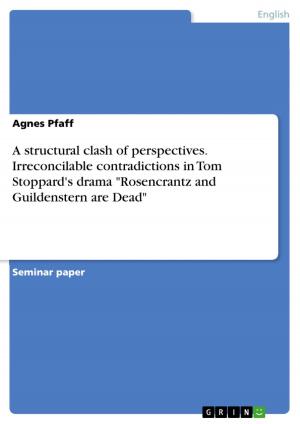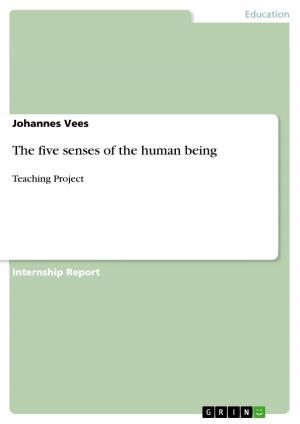Tireseas and other seers in T.S. Eliot's 'The Waste Land'
Fiction & Literature, Literary Theory & Criticism, British| Author: | Patrick Trapp | ISBN: | 9783640767854 |
| Publisher: | GRIN Publishing | Publication: | December 3, 2010 |
| Imprint: | GRIN Publishing | Language: | English |
| Author: | Patrick Trapp |
| ISBN: | 9783640767854 |
| Publisher: | GRIN Publishing |
| Publication: | December 3, 2010 |
| Imprint: | GRIN Publishing |
| Language: | English |
Seminar paper from the year 2006 in the subject English - History of Literature, Eras, grade: 1,7, RWTH Aachen University, language: English, abstract: Modernist writers like Ezra Pound or James Joyce often wrote in fragmented style, used allusions instead of metaphors and broke with traditional verse and turned away from classical poetry. In many cases they did not use classical metaphors but rather wrote in allusions, which refer to something in a more indirect way than traditional images do. With their literature and style they tried to criticize modern society. Among these authors, T.S. Eliot is one of the most important modernist writers. 'The Waste Land has come to be regarded as one of the chief exemplars of modernism in English literature.' (Reeves 1994: 3) According to this Eliot's poem can be seen as a typical example of modern poetry. In his long poem The Waste Land the author refers to a number of mythological images and stories. These are presented in fragments but make sense and seem to be well structured when one analyzes them deeper after several close readings and analyses. One of the most important personages in his poem is the blind seer Tireseas. In his Notes to The Waste Land, T.S. Eliot points out that '[w]hat Tireseas sees, in fact, is the substance of the poem' (1971: p. 148). This substance of the poem, which was first published in 1922, is to be analyzed in this term paper. Tireseas, a blind seer, who appears in ancient Greek literature in the Theban Plays by Sophocles and in Roman literature in the Metamorphosis by Ovid, is used as a reflex of the author's voice foreseeing human failures without being able to change them. In Greek mythology, especially in Sophocles' Antigone, he appears as a reminder of traditions.
Seminar paper from the year 2006 in the subject English - History of Literature, Eras, grade: 1,7, RWTH Aachen University, language: English, abstract: Modernist writers like Ezra Pound or James Joyce often wrote in fragmented style, used allusions instead of metaphors and broke with traditional verse and turned away from classical poetry. In many cases they did not use classical metaphors but rather wrote in allusions, which refer to something in a more indirect way than traditional images do. With their literature and style they tried to criticize modern society. Among these authors, T.S. Eliot is one of the most important modernist writers. 'The Waste Land has come to be regarded as one of the chief exemplars of modernism in English literature.' (Reeves 1994: 3) According to this Eliot's poem can be seen as a typical example of modern poetry. In his long poem The Waste Land the author refers to a number of mythological images and stories. These are presented in fragments but make sense and seem to be well structured when one analyzes them deeper after several close readings and analyses. One of the most important personages in his poem is the blind seer Tireseas. In his Notes to The Waste Land, T.S. Eliot points out that '[w]hat Tireseas sees, in fact, is the substance of the poem' (1971: p. 148). This substance of the poem, which was first published in 1922, is to be analyzed in this term paper. Tireseas, a blind seer, who appears in ancient Greek literature in the Theban Plays by Sophocles and in Roman literature in the Metamorphosis by Ovid, is used as a reflex of the author's voice foreseeing human failures without being able to change them. In Greek mythology, especially in Sophocles' Antigone, he appears as a reminder of traditions.















